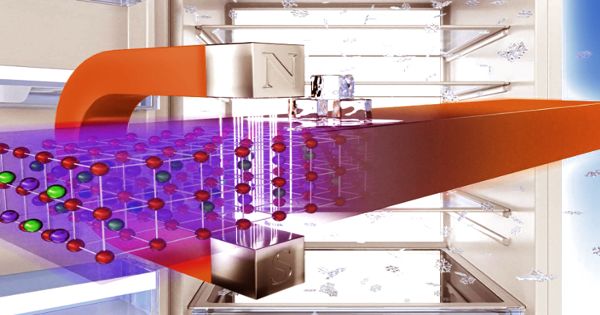Scientists Design New Lightweight Magnets with possible real-world applications
Magnets are an integral part of our on a regular basis life and are discovered in lots of medical and digital gadgets, together with family home equipment, electrical motors, and computer systems. The demand for brand spanking new magnetic supplies has considerably elevated lately. A lot of such supplies are composed of metallic components or uncommon earth metals that can be utilized at room temperature. In 2019, the worldwide marketplace for these inorganic magnets was valued at US$ 19.5 billion and is anticipated to succeed at US$ 27.5 billion by 2025.
Nonetheless, inorganic magnets could be costly to manufacture and entry to their constituent components is usually restricted.
An international team of researchers led by the Centre de Recherche Paul Pascal has discovered a novel way to design magnets with outstanding physical properties, which could make them complementary to, or even competitive with traditional inorganic magnets, which are widely used in everyday appliances.
For many years, chemists have been making an attempt to manufacture high-performance magnets at low power and monetary value utilizing molecular models of plentiful metallic ions and cheap natural ligands. To this point, only a few molecule-based magnets working at room temperature have been reported, and the few identified examples cannot store information.
New magnets have possible real-world applications
An international team of researchers led by CNRS researcher Rodolphe Clérac at the University of Bordeaux has found a new chemical strategy to design magnets based coordination networks composed of an organic radical (a molecule with an unpaired electron, thus carries spin) and a paramagnetic (spin-carrying) metal ion to generate a very strong magnetic interaction.
These new magnets have many fascinating bodily properties, together with excessive working temperature (as much as 242 °C), massive coercivity (i.e. the flexibility to collected data), and low density.
The brand new light-weight magnets with densities around 1.2 g cm-Three vs. greater than 5 g cm-Three for conventional inorganic magnets exhibit massive room temperature coercivity as much as 7500 Oe (2 orders of magnitude greater than beforehand reported for molecule-based methods) and excessive working temperatures that exceed the present document for coordination networks by greater than 100°C.
Along with the excellent bodily properties, the method of synthesizing these magnets is comparatively easy, and could also be simply utilized to many metal-organic supplies for conversion to metal-organic magnets.
Regardless of the relative ease of making ready the brand new magnets, they’re very air-sensitive and poorly crystalline, but the researchers had been capable of overcoming these obstacles to completely characterize these magnets. The digital and magnetic properties of those magnets had been characterized in an element-selective method by means of a number of worldwide collaboration. Whereas the BM01 and ID12 beamlines on the European Synchrotron Analysis Facility (ESRF) had been key to understanding these supplies with reference to their construction and magnetic properties, nevertheless, latest Academy of Finland analysis fellow Aaron Mailman contributed to the analytical and spectroscopic characterization of those magnets.
”The synthetic strategy used in this work should be widely applicable to related systems and while these results represent new benchmarks for coercivity and critical temperature, in low density, lightweight metal-organic magnets, I expect future results will lead to further improvements and real-world technology applications” says Aaron Mailman.
Rodolphe Clérac says ”To be honest, I hadn’t considered applications of my research before this work, as my team and I do fundamental science, but it is now clear to me that we can potentially use these materials in magnetoelectronic, magnetic sensors and recording technologies, especially when the weight is an issue, for example, in smartphones or satellites,” he concludes.













